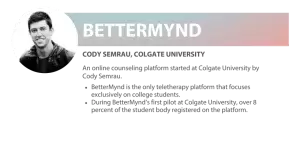
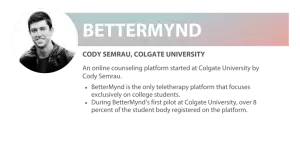
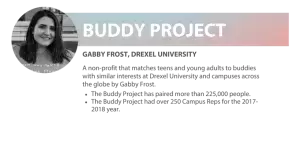
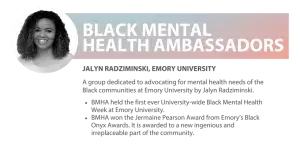
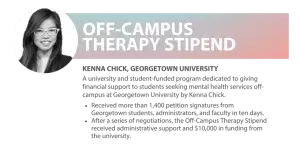






While awareness campaigns and policy changes are important parts of supporting mental health and wellbeing on campus, new programmatic solutions led by students offer important perspectives and ideas about how to best meet the needs of their peers. In a world of limited resources, student leadership can make all the difference in creating alternatives and supplements to traditional services, such as working with counselors or psychiatrists or attending group therapy.
With an understanding of the effectiveness of peer support, the influence of community, and the impact of the consumer voice, Mental Health America created its inaugural Collegiate Mental Health Innovation Council (CMHIC) in 2017. CMHIC is dedicated to discussing the latest issues students face when balancing higher education with mental health concerns and highlighting student-led innovation on campus that addresses these concerns. CMHIC consists of student leaders who have created programs or lead advocacy on campus that fills gaps in traditional mental health supports and services in their communities.
The first report, Beyond Awareness: Student-led Innovation in Campus Mental Health, highlights the impact of disability supports, peer support, and technology on student mental health and the role of student leadership in each of these areas.
Major highlights:
- For more comprehensive disability supports, student leaders can create education-based programs and skill-building supports for their peers, and students or faculty can lead courses for academic credit to allow students to prioritize their wellbeing. Students can also serve as navigators for the often confusing and challenging process of obtaining accommodations.
- Peer support is a critical part of engaging more students, providing support outside of hours spent in treatment, creating community, shifting demand from counseling services, and offering low to no cost options for students looking for help
- Technology can help students connect to existing professionals, support one another, and share information on wellbeing.
In addition to focusing on issues that have the potential to impact mental health on campus, members provided information about their programs and advice for students looking to do the same things on their campuses.

